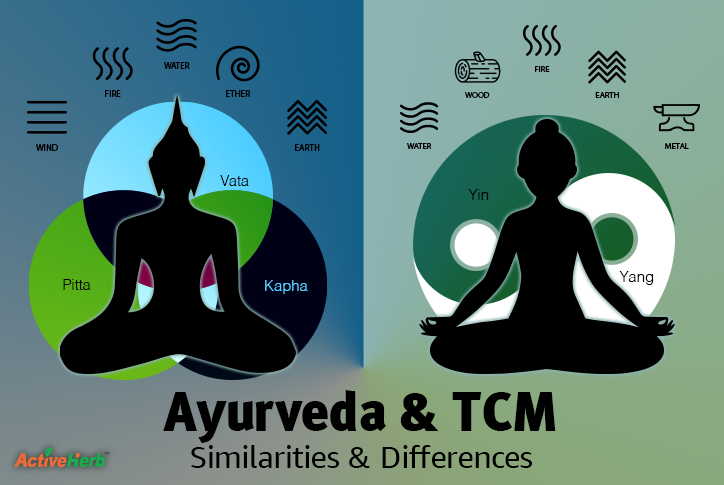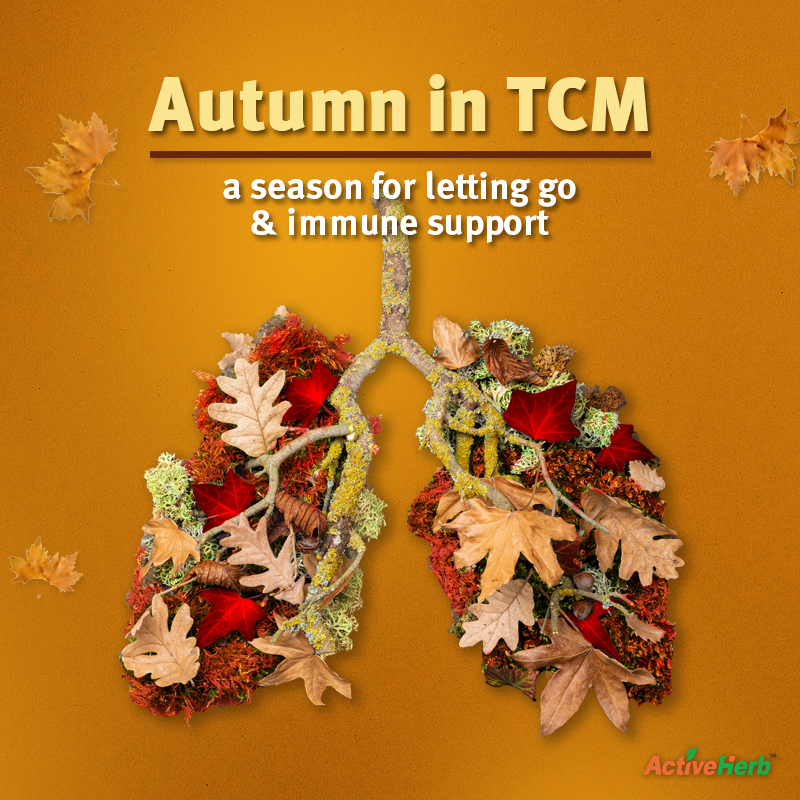Ayurveda & TCM: Exploring The Similarities & Differences Of These Ancient Systems

TCM is popular the world over but it’s not the only ancient medicinal game in town. It’s up for debate but perhaps the second-most popular traditional healing system from the orient is Ayurveda.
Ayurvedic medicine could be called Traditional Indian Medicine, but for some reason, the acronym TIM has never caught on while TCM is more or less a household name. It’s about time we pay homage to the Ayurveda and examine its similarities and differences to TCM.
What is Ayurveda and How Is It Like TCM?
Like TCM, ayurveda’s roots that date back 5,000 years, give or take a few centuries. In Sanskrit, the ancient holy language of the Hindu tradition in the Subcontinent, ayurveda is a combination of the words “ayus” and “veda”. Loosely translated, the words mean “the science of life.”
Both Ayurveda and TCM are holistic systems, combining philosophy, anatomy, spirituality and cosmology (the study of the cosmos; do not confuse this with cosmetology).
Like TCM, ayurveda holds that optimal wellness is dependent upon a perfectly-balanced mind, body and spirit. There is no disconnect between human beings and the heavens in either of the two systems; everything is connected in this expansive universe. If you are living in harmony with the universe, you will enjoy great health, both systems believe.
In addition, both systems focus on every aspect of the patient—harmony at home, diet, environment, etc. Ayurveda and TCM differ from conventional western medicine, which tends to focus entirely on patient symptoms.
And when it comes to improving patient outcomes, the medicines used in TCM and ayurveda also share similarities. In fact, a study in Evidence Based Complementary and Alternative Medicine says that nearly half of all the plants used in both modalities share common characteristics.
The Five Elements of TCM & Ayurveda
In TCM, 5 Element theory explains the natural aspects of everything under the sun. Organs, the seasons, herbs, etc., all have aspects of one of the five elements: earth, fire, metal, water and wood. Ayurveda also has a 5 great element theory. The only differences are that in Ayurveda the elements do not include metal or wood. The two different elements in Ayurveda are ether/space and air/wind.
The 5 element theory in TCM, created during the fifth through the third centuries BCE, expounded on the central tenet of Yin and Yang energies. Ayurveda has a similar concept to Yin and Yang. But instead of two life forces that are constantly dancing in a delicate ballet of balance, there are three life forces in ayurveda: vata, pitta and kapha.
The three doshas–vata, pitta and kapha–each contain one or two elements. And each person possesses some combination of the three doshas. Somebody who is predominantly pitta and out of balance would be considered fiery or bad-tempered. A vata dosha without balance is derogatorily called an airhead or space cadet since vata is the air/space element.
A kapha-dominant person who has lack of balance may be a couch potato since the dosha is associated with being grounded and earthy.
In TCM, to achieve optimal health, all organ systems must be working in perfect harmony, i.e. with a balance of Yin and Yang energies. Likewise, in Ayurveda, the three doshas must exist in a harmonious state for balance and health. The two systems also believe that an imbalance is characterized by either deficiency or excess (kshaya, vriddhi in Sanskrit, respectively).
Energy Pathways of TCM & Ayurveda
Both TCM and Ayurveda believe that there are energetic points along the body that connect via invisible channels. TCM refers to this concept as meridians. In the Ayurvedic system, these channels are “nadis.”
The energetic life force that flows through meridians is referred to in TCM as Qi. Ayurveda refers to this primordial, universal energetic currency as “prana.”
There is a main difference between the two systems when it comes to energetic pathways. In TCM, meridians are clearly identified in the limbs whereas in Ayurveda, it’s even more esoteric; the nadis are not identifiable in the limbs. Furthermore, there may be way more mystical energetic points in Ayurveda. Ayurvedic philosophy says there are 72,000 nadis in the human body, give or take a few nadis.
No matter the system of medicine, these energetic conduits in the human body must remain free of obstructions in order to achieve optimal health. This is true of modern, western medicine as well. A buildup of plaque in the arteries causes poor cardiovascular health.
Are There Chakras In TCM?
Finally, let’s see if there is something that’s equivalent in TCM to the chakras of Ayurveda. Chakras are the seven spiritual and energetic centers of the body, starting at the base of the spine and rising to the crown of the head. Anybody who has taken a yoga class is certain to be familiar with chakras.
Many yoga teachers start or end classes with meditation and instruct their students to focus on bringing the breath and energy up the body from the root chakra to beyond the crown of the head. Accomplishing the task of ascending the energetic pathway up the spine and beyond the crown of the head is linked with feelings of euphoria.
In TCM, there is a similar concept to chakras called “dantian.” Instead of seven energetic centers, there are three main dantian in the body. Collectively, the three dantian house the three treasures of TCM: Qi, Jing (reproductive energy or essence) and Shen (spirit, consciousness).
If you want to learn more about the dantian of TCM, we’ll cover that in a future post on the ActiveHerb.com blog.
Conclusion
Both these ancient systems of medicine focus on promoting balance in the body and exploring underlying root causes rather than merely treating symptoms. There’s a good reason why after 5,000 years, these time-tested modalities remain widely popular around the globe.






